What is the best sandwich in the world? Perhaps something as simple and inoffensive as a Philly Cheesesteak.
I mean, who doesn’t love a good Cheesesteak? It’s certainly one of my favorite things in the world! Mountains of beef, glorious beef, piled on soft, white bread and slathered liberally in streams of hot, gooey, molten cheese:
Indeed, despite its seemingly simple nature, it’s lack of fizz or flair, or even a pretty face, there are very valid reasons why the Philly Cheesesteak is consequently ranked high on about every list of the world’s greatest sandwiches: It’s comforting, surprisingly simple in nature, carnally greasy and just damn good!
And then there are a slur of other factors to consider: for better or for worse, the humble Philly Cheesesteak excels in so many other ways amongst its culinary brethren on the list of the world’s greatest sandwiches. It’s undoubtedly one of the most unhealthy sandwiches devised by man and it’s easily one of the world’s juiciest and messiest sandwiches. And on top of all that, it may also be one of the most tradition-ridden, most hotly debated and most talked about sandwiches in the bunch… A fact that can probably be traced back to the sandwich being rooted in South Philadelphia, an area known for its population of hot-blooded Italian descent – but what do I know?
Indeed, the Philly Cheesesteak Sandwich may be a top contender for best sandwich in the world… But just what the hell is a proper, traditional Philly Cheesesteak? How does one make a perfect cheesesteak? What are the ingredients needed and how do you put it together. Those, in stark contrast to the sandwich itself, are frighteningly complex questions and today, I’ll be adding to the controversy by giving you my pale, white, Danish take on the Perfect Philly Cheesesteak Sandwich.
But first, as always, a bit of history and background… How exactly did such a great sandwich originate and why exactly has such controversy and debate followed in its wake?
History of the Philly Cheesesteak
The creation of the Philly Cheesesteak (known simply as a Cheesesteak or Cheeser to locals) is widely attributed to the brothers Pat and Harry Olivieri, who – for reasons that differ from account to account – started serving chopped steak on either hotdog buns or Italian rolls in the early 1930.
One popular version of the story holds that the brothers, who originally owned a hotdog stand near South Philadelphia Italian Market, one day took to experimenting. Brother Pat crafted a sandwich consisting of fried onions and chopped pieces of steak and while he was eating his creation, a cab driver pulled up. True to the form of every single undocumented food myth, the driver asked for “one of what he’s having”, tried it and liked it so much that he suggested the brothers quit making hotdogs and started focusing on this new breed of sandwich.

Apparently prone to always taking the advice of strangers on the street, the brothers did, and this became the hallmark of one of Philadelphia’s grandest culinary landmarks, Pat’s King of Steaks, which – alongside bitter rival Geno’s – is considered amongst the most well-visited and classic places for authentic Philly Cheesesteaks… And the rest, as they say, is history.
But wait? Did anyone else notice that this culinary tall tale had no mention of actual cheese (or even processed cheese for that matter? Ahh, attentive readers, I dig that! Well, here’s the thing, you see: the cheese in the Philly Cheesesteak, or steak sandwich as it was known at the time, was added as a bit of an afterthought – in what may be considered the most fortunate and important after-thought in recent culinary history.
According to Cheesesteak history, corner stone (and possible inventor) Pat Olivieri, it was Joe “Cocky Joe” Lorenza, a former manager at Pat’s Ridge Avenue location, who first had the brilliant idea of adding cheese to the mix. The mix between the already hugely popular steak sandwich and soft, molten cheese was a match made in heaven, and on that night a legendary sandwich of the ages was born. As was much of the the debate and controversy surrounding it.
The original Philly Steak Sandwich, or Cheesesteak, has seen a myriad of variations throughout the years. Some of them, like the use of American cheese or bell peppers as toppings, are generally accepted. While others, such as Swiss cheese, are quite heavily frowned upon by purists – to put it mildly.
So what, in the eyes of purists, make a Philly Cheesesteak? Well, it’s really quite simple: an authentic Philly Cheesesteak consists of about three very specific ingredients and a few additional, optional condiments and toppings… Respect these common core values and you’ll forever have friends in Philly, start cocking about with them and you’ll probably set some South Philly Italian blood ablaze. So, uh, let’s not go there.
Less is more: Cheesesteak ingredients
If you want to make the perfect cheesesteak at home, you are in luck! Doing so will be one of the easiest tasks you’ve ever undertaken – and the entire task does not need to entail more than a total of three ingredients… Yes, three, count them, three ingredients! Of course, as with anything Italian in life, the quality of the few ingredients you use become a bit of an issue, so let’s walk through them together before getting started, shall we?
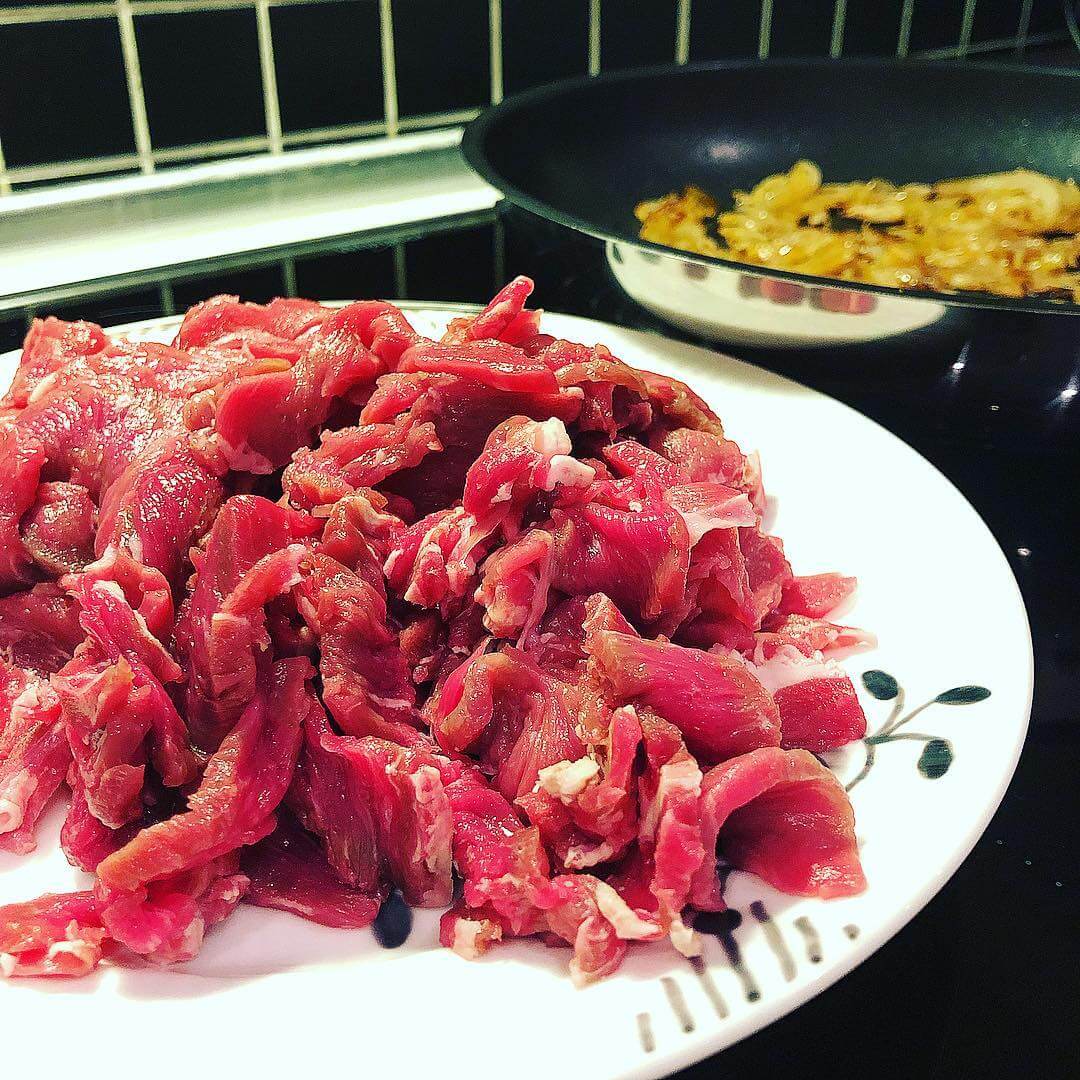
Bread is life: the perfect bread for Cheesesteak
You want to know a crazy little fact that people rarely think about when it comes to sandwiches and crafting better than average sandwiches? Bread matters! The type of roll or loaf in which you enjoy your sandwich is absolutely not irrelevant and much less so is the quality of said roll or loaf.
Don’t believe me? Why not splurge on a sandwich made with a quality roll? Then go back and tell me you’d much rather have industry standard, airy, bleached, white bread full of more preservatives, chemistry and artificial ingredients than actual taste and… What? I thought not! Good, now that we can all agree that quality matters, let’s discuss for a minute the proper type of bread for our steak sandwich job. It’s complicated, see. Well, at least if you’re not exactly from the general Philadelphia area. The one proper roll for the job, i.e. the only authentic choice, comes in the shape of Amoroso rolls from Amoroso’s Baking Compnay in Philadelphia. Yes, strangely enough, the best possible cheese steak loaf is baked fresh, delivered fresh and consumed fresh in Philadelphia, the home of the sandwich… Funny how that works!
Obviously, this means that those of us not lucky enough to reside in the general Philadelphia should not enjoy the luxury of cheese steaks…. And, umm, no! It simply means we will have to either attempt to make our own or cut a few corners and make do. If we’re going to go down the make your own route, I do recommend this partially informative, partially cocky video recipe from what was once the Brother’s Green – now Pro Home Cooks – youtube channel detailing not only the woes of cheesesteak loaf-baking, but also a lot of tips and tricks about the sandwich itself.
If, like me, you’re not quite hooked on doing your own baking… Well, you’re up for a bit of research and trial and error as we try to find the best possible loaf for the job. It’s not that I don’t want to give you the answer to your quest, it’s just that… Well… Since, at the time of this writing, I have readers in xx countries around the world, I can hardly give everybody everywhere the perfect answer to their cheesesteak loaf-acquiring conundrum about how to get the best possible roll for the job in their general area. I can, however, tell you what to look for in a roll on your way to cheesesteak perfection.
In Philly, the proper term for a cheese streak bread delivery vessel is actually a “steak roll”. Asking for a good “steak roll” should generally get the job done. Anywhere else in the US, you’ll probably want to look for something called a hoagie, sub or torpedo roll.

For those outside of the US (like myself) who have little to no idea what we’re talking about, you’ll want a large, oblong piece of bread, sort of akin to our baguette. But softer. Much softer. Think the kind of shape Subway uses in their sandwiches and think about the same general texture. A cheesesteak roll should be light in weight and sort of crisp but not overly crunchy when it comes to crust, while the crumb should be soft, tender and not overly chewy… Traditional French baguettes or sourdough won’t work well as they’re simply too crunchy and chewy. Think something more along the lines of an oversized hotdog bun which, presumably, was the original vessel for the Philly (Cheese)steak sandwich. Something that breaks away easily with every bite, creating a perfect, soft texture along with the filling.
Depending on your location, it may take a few tries to get the delivery vessel right, but then again culinary experiments are such great fun. Keep practicing and keep eating sandwiches till you find the best loaf for the job, which ideally should come fresh from a local bakery or at the very least off the gourmet selection of your local supermarket… You know, the sort of products sporting ingredient lists without a whole bunch of nonsense on them.
If all efforts fail, my European friends, simply look for the best possible baguette you can find but a thin-crusted one at that, and one as white as possible (can’t believe I just said that for once). It won’t be perfect in texture, but it will more than suffice!
The perfect Steak for Cheesesteak
Having just ousted bread as one of the most important parts of a cheesesteak, it goes to reason that a cheesesteak would not be a cheesesteak without steak… But what sort of steak? Well, for once, your choice here is easy.
Cheesesteak is traditionally prepared with either top round or rib eye, the king of steaks, and in the minds of this food blogger, that is the way it has always been and the way it should always be. Rib eye is THE choice for cheese steaks. Sure, other methods have been suggested: Everybody’s culinary geek, Alton Brown, for example suggested a preparation using beef tenderloin scraps while others have suggested more humble cuts like top round. But despite all these false claims from false prophets (ahem!), rib eye has always reigned supreme as the king of choices for cheese steak. The thing is, you see, that neither more fancy or expensive nor more humble and inexpensive alternatives provide quite the same perfect balance between flavor and texture, tenderness and chewiness of lean and fattiness that is provided by our old friend, the rib eye steak.
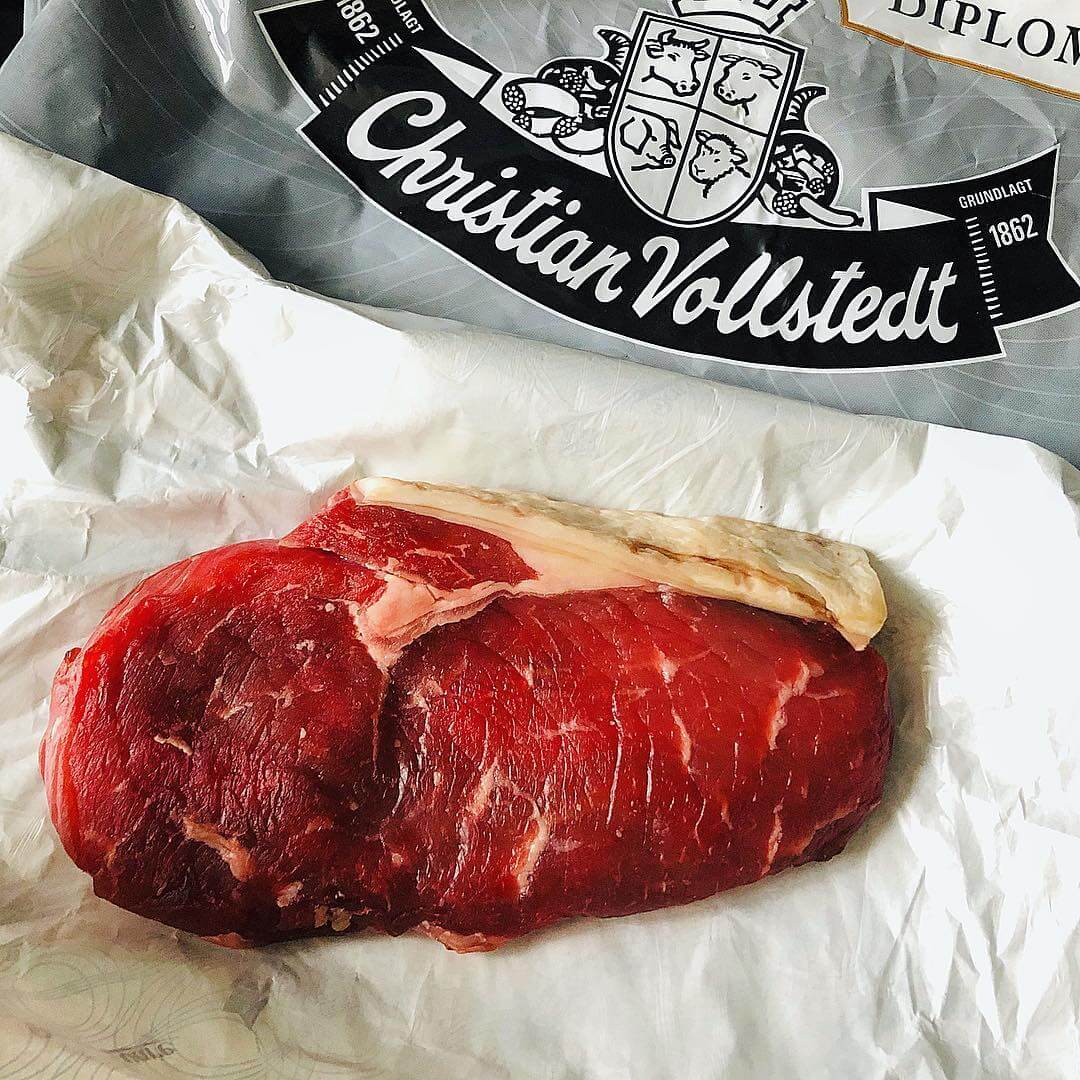
Granted, rib eye steaks are not exactly the most inexpensive cut of cow you can get your hands on… But let’s be realistic here, we’re about to consume a steak, fried in plenty of fat, wrapped in white bread and drenched in cheese… From so many angles, including both costs and the very obvious health-perspective, it’s probably not something we’d want to eat every day, so why the hell not make the best of it and spoil ourselves silly with the ultimate gourmet cheesesteak experience?
Go on, you know you want to… Go out there, get that beautiful rib eye steak – it doesn’t have to be the biggest, most beautiful and outrageously expensive prime steak in the bunch – just something beautiful and nice. The Scarlett Johansen of steaks, if you will. Get yourself a subtle and beautiful steak and go make yourself that once in a year cheesesteak sandwich! I promise you, it will be a thing of epic beauty – with flavor and texture to match its appearance!
The perfect Cheese for Cheesesteak
As was the case of the steak, making the perfect choice of cheese for a cheesesteak sandwich should be a pretty simple ordeal, and indeed it is. Sorta. The trouble is, however, that on the subject of cheese, even die-hard cheesesteak traditionalists disagree and are generally split in two warring factions: Provolone or Whiz. An age-old conflict made even more complicated by New Wave Cheesesteak Lovers trying to bring a slur of other gourmet cheeses into the mix.
It all gets rather complicated rather quickly, so let’s try to break The Great Battle of Cheesesteak Cheeses down and simplify it once and for all.
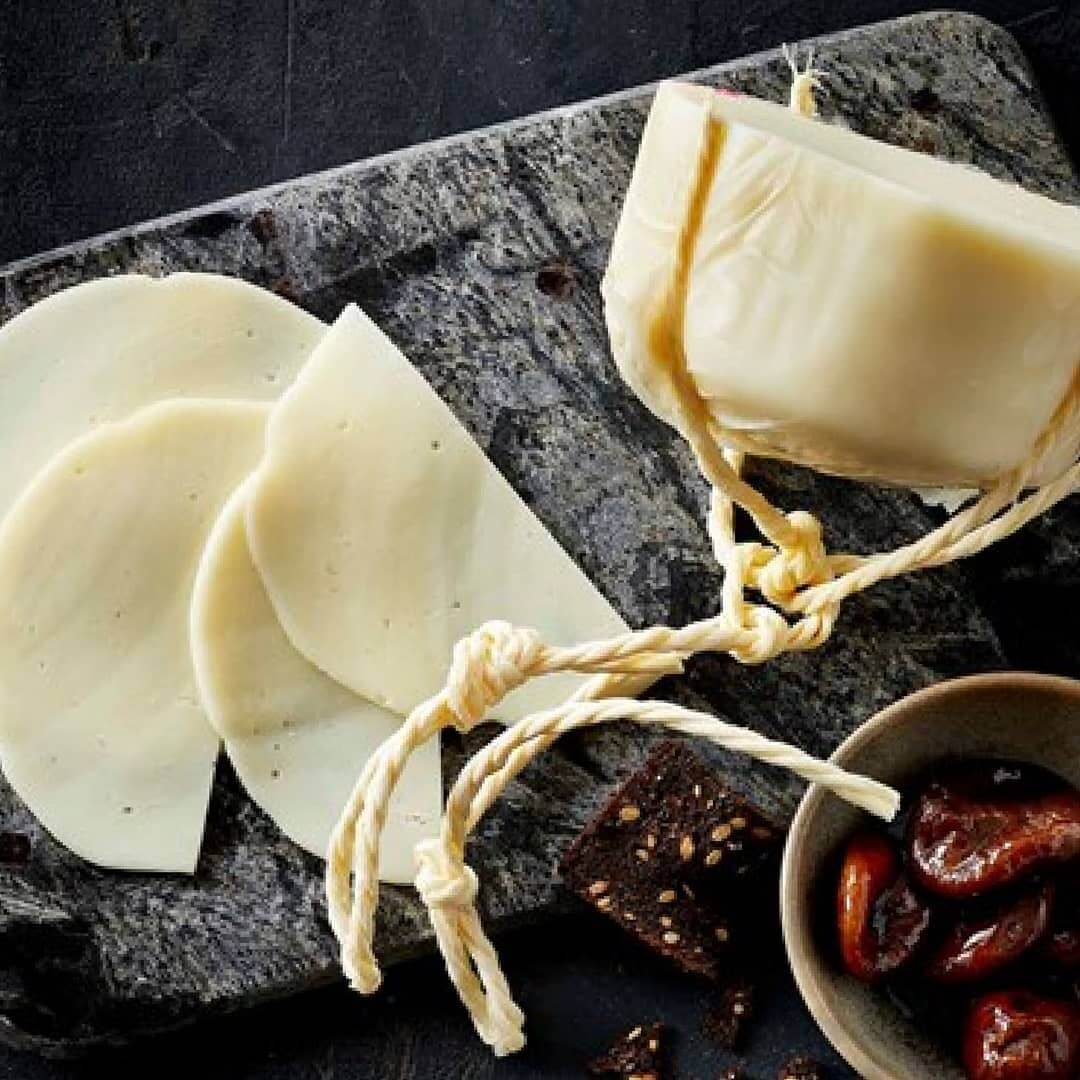
Provolone, to those not in the know, is a cow’s milk cheese of Italian origin. Provolone is exceedingly popular amongst sandwich crafters (and connoisseurs) of Italian origin for it’s mild, slightly tangy, slightly sharp flavors – and with just about everybody else in the sandwich world for that matter for much the same reason, by the way. Provolone was the original choice of cheese for the cheesesteak sandwich and is still a very popular choice for a number of reasons, including but not limited to history, quality, taste and the fact that it’s a real cheese… Unlike our next contender for the title as top cheesesteak cheese.
Whiz, or Cheez Whiz is a pourable cheese product made (by the lovely Kraft company) from processed American cheese – and a number of additives and other questionable things. Not technically cheese and not technically not cheese, Cheez Whiz falls within the range of greatly popular American products that make very little sense to Europeans but have become the favorite of a nation.
Cheez Whiz, with its pourable quality and silky texture has become an exceedingly popular cheese product in the States in place of natural, melted cheeses and in an odd kind of way, it all makes sense.
The texture of Whiz makes it the perfect choice for cheesers (as the locals would call them) as it distributes evenly throughout the sandwich, the current proprietor of Jim’s Steaks in Philly argues along with many of his peers, yet this food blogger can’t help but wonder if Whiz is not really favored by cheesesteak crafters from a convenience standpoint more than anything else. After all, if you’re serving thousands of sandwiches a day, sometimes to the tune of drunk, unruly customers, wouldn’t you prefer a pourable cheese product rather than having to melt slices of real cheese onto each individual sandwich? But I digress, the fact of the matter is that Cheese Whiz is hugely popular with many cheesesteak fans who grew up eating them this way… As the Italians would say: “It’s not for me… But what can you do?”
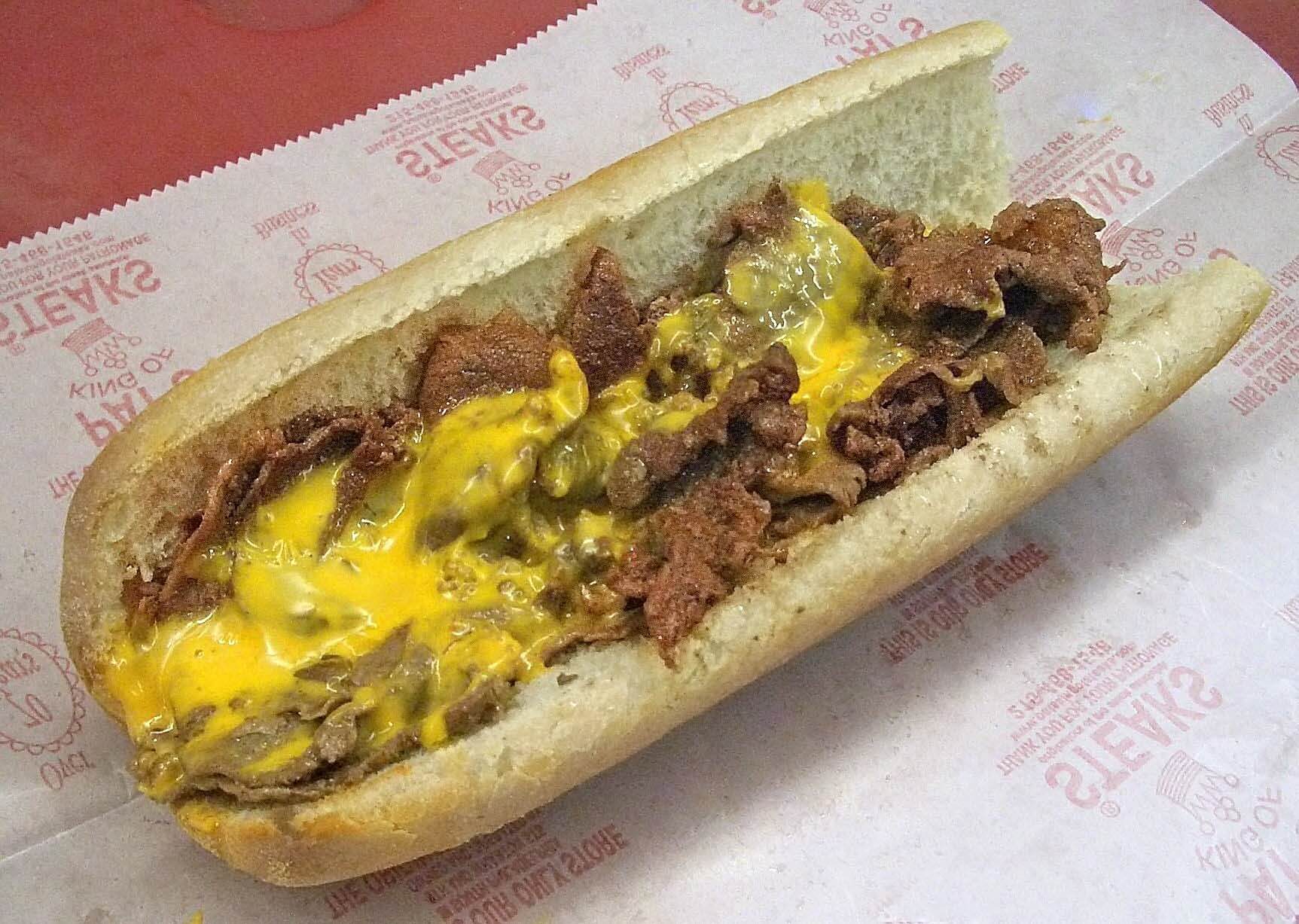
And then there are the alternatives, of which many have been tried without much success. From mozzarella over American cheese to artisanal chesses ranging from gouda over cheddar to aged gruyere… Right down to the 2003 pivotal moment in cheesesteak history in which presidential candidate John Kerry ordered a Cheesesteak with SWISS cheese at Pat’s in South Philly… The jury is still out as to whether Mr. Kerry was actually failing at trying to be cool and ordering “a cheeser with whiz” in true Philly style, but the cheesesteak order heard around the world certainly made headlines and were even touted by as evidence of “an alternative lifestyle”. Kerry’s campaign tanked shortly after.
What can we learn from Mr. Kerry’s mistakes? Well, other than leaving it to Obama to be a man of the people, it would probably be to keep it simple and inoffensive. If we’re looking for something to replace our two go-to cheeses, it should be something mild, salty, fatty and easily melted. Like, say, mozzarella, American or even our Danish hometown hero, Havarti cheese.
The grand question: Which is the best cheese for cheesesteak?
The subject of cheese on cheesesteak is a long and difficult one. One over which war may or may not have been fought. Which cheese eventually becomes your favorite will rely heavily on personal preference, but once you’ve made a decision, you are likely to stick with it till the end and be ready to defend it with your life.
Me? I’m definitely on Team Provolone over Cheez Whiz and not only for the obvious reason that Provolone is a real damn cheese. It also has to do with flavor and texture as well. Provolone just has more taste, not to mention a more natural, stringy, actual cheese-like consistency as well. But then again, I like the flavor and texture of cheese. If you like the silky, gooey texture of Cheez Whiz, then far be it for me to decide.
For this perfect recipe of mine, however, we’ll use slices of Provolone cheese from our local cheese monger. If you’re not into Provolone, or can’t find it in your locale, you may substitute any soft, melty cheese at your own discretion, leisure and risk… Just… Stay off the Swiss, ok?
Cheesesteak: The optional toppings
And really, that’s all. Having thus examined three incredibly simple ingredients we’ve got all we need to craft a perfect Philly Cheesesteak. What? That’s it? Well…
It’s not that you can’t add other ingredients to a cheesesteak and it’s not that a lot of people don’t… As with so many other great sandwiches, the customization options are pretty much endless, but if you want to keep it real, and keep it Philly, you’ll keep it pretty fucking simple. So, for once in a blue moon, we’ll keep it short, simple and to the point on this blog and simply use this space and opportunity to inform you that popular yet highly optional additions for cheesesteaks include (amongst others):
- Caramelized onions (which despite being a part of the original mix is now, strangely enough, technically considered an optional ingredient)
- Mushrooms
- Bell Peppers
And if you ask me, they’re all very much optional… Except the onions! They’re very much not. Mushrooms and bell peppers have never really done it for me on a cheesesteak, they sort of mess up the texture in a slightly wet and watery way and draw away from the few, primal flavors of wheat, meat and cheese. The slightly sweet, slightly charred flavors of some properly caramelized onions, on the other hand, well, just do something for me….
And you can go ahead and call me out on my double standards here. Onions as a cheesesteak topping are not entirely historically traditional, I know, but if they’re good enough for many of the people of Philly, they’re good enough for The Johan! Oh, and hey, remember how the Italians say that once you start adding more than five ingredients to something is when you should start seriously considering what you’re doing lest you run the risk of fucking it all up? Well: Bread, meat, cheese, onions… That’s four, right? We’ve still got a very legit, very Italian sandwich on our hands, eh?
Cooking the perfect cheesesteak: It’s easier than you think.
As you can probably tell, the Philly Cheesesteak is about the most simple sandwich you’ll ever get to throw together – well unless you’re baking the bread from scratch, of course. What matters here is not so much the number of ingredients, but the quality of the ingredients – and the tools you use.
You’ll want to go to your baker for that quality bread, visit your local cheese monger or deli store for some proper Provolone cheese (or whichever other cheese tickles your fancy) and go see your butcher for some proper damn steak for the job, even if we’re just building a sandwich. It doesn’t have to be the prettiest, most even-looking rib eye steak the world has ever seen (we’ll be slicing it into miniscule pieces after all), but it does have to be quality, well-aged, tasty beef!
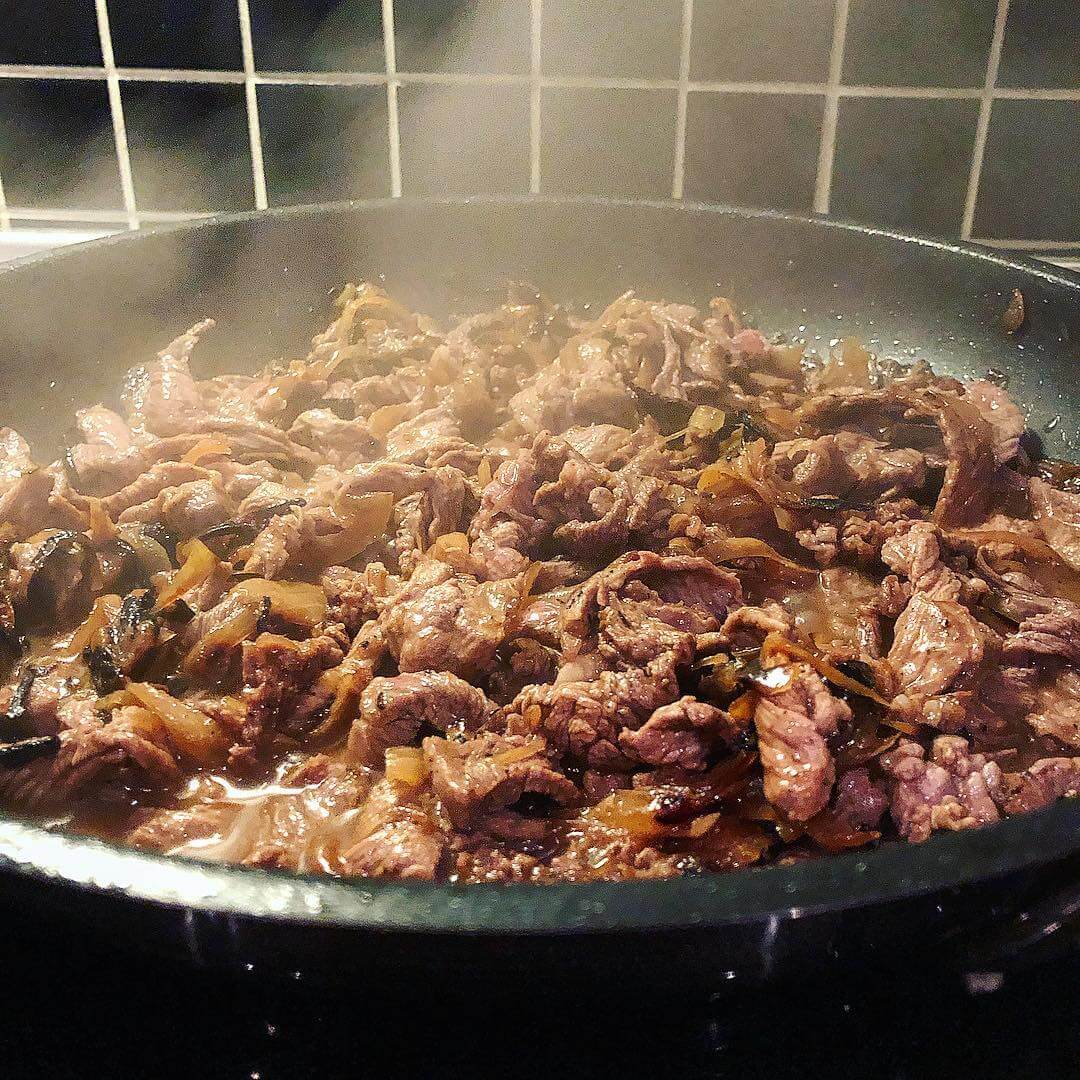
Aside from that you will need a couple of, uhh, additional ingredients, that – in true Italian cooking equation style – are completely free and don’t count against our allowed number of ingredients: a bit of salt and pepper to taste and a high-smoke-point oil for frying. That is, unless, for some reason, you have beef tallow or bone marrow left over from some other cooking project, like, say, our homemade beef stock recipe. If you do, by all means use it. The intensely rich, primal beefy flavors will severely intensify the beefy flavors of the finished sandwich… Now there’s a pro tip if ever I had one for you.
And that’s it, ladies and gentlemen. No additional seasonings, no spices, no hocus pocus or secrets… Just real, simple, straight forward flavors created by the best quality ingredients available to us. The only other things at our disposal for the cooking process will be the only three tools that *every kitchen needs*: your heaviest and best seasoned cast iron skillet, a chopping board and a properly sharpened chef’s knife… And you’re good to go. From here on, it’s all a matter of preparation and timing as we shall soon see in the recipe below!

Philly Cheesesteak - perfect, authentic recipe
The perfect, authentic recipe for the Philly Classic Cheesesteak Sandwich1
Ingredients
- 1 hoagie roll or other soft, oblong sandwich roll
- 200 grams rib eye steak
- 1 yellow onion about 200 grams
- 4 slices Provolone cheese
- beef tallow for frying, can substitute oil or butter
- salt and pepper to taste
Instructions
-
Using a sharp knife, peel onion, half it, cut off the ends and cut into pieces of about 1 cm x 1 cm.
-
Heat a small amount of beef tallow or oil in a large cast iron skillet set over medium heat.
-
Add onions and cook long and well until browned, softened, reduced in size and slightly charred around the edges. About 5-10 minutes.
-
While onions are cooking, cut steak into as thin slices as possible, turn slices and slice again into very small cubes.
-
Remove cooked onions from the skillet, raise heat to medium-high and add more oil to the skillet.
-
Add beef to the skillet and cook till browned on the surface with specks of pink still shining through.
-
Add the onions back to the pan, toss everything together and using a spatula, push the meat and onion mixture into a shape resembling the loaf you’re using.
-
Place slices of cheese on top of the meat and onion pile, and continue cooking for about another 30-60 seconds, allowing the heat of the meat and pan to melt the cheese into the meat/onion mixture.
-
Grab your nearly split loaf, place it over the meat and onion mixture, squeeze to trap the filling and using a bit of luck and the aid of a spatula for stability, turn the whole thing over to reveal a properly stuffed cheesesteak sandwich.
Recipe Notes
For added authenticity, wrap the whole cheesesteak in foil after cooking and allow to “steam” for a few minutes. This process further softens the bun and allow the juices to seep into the roll, creating a messier, more wholesome and more perfect experience.
And there you have it. The world’s most simple, most messy and absolutely, positively, perhaps-ly best sandwich: The Philly Cheesesteak. As far as serving suggestion goes, very little fuzz is needed. As stated earlier, this is not the sort of sandwich to ever win a beauty contest so why even bother. Serve it up in a piece of foil or on a plate with very little ceremony.
As far as sides are concerned, very little effort is needed. Add at least a pint of your favorite beer on the side and dig in! As far as condiments are concerned, they are again very much optional, but if you’re a good sport, you’ll offer a choice of ketchup or yellow mustard. Unless it’s Sunday, of course, and you, like the rest of us, are a loyal observer of #SrirachaSunday… Then you’ll know exactly what else to add… But, please, Dios Mio, don’t tell the Italians!
